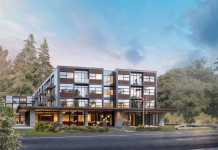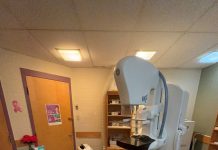On the same day Ontario’s chief medical officer of health admitted the province was well into a sixth wave of the COVID-19 pandemic, he ignored calls to reinstate mask mandates. Instead, Dr. Kieran Moore opted to issue a “strong recommendation” that people protect themselves with a three-layer or medical mask. It’s unlikely that such a measure will help stem the tide of new infections, says the Registered Nurses’ Association of Ontario (RNAO).
During a press conference Monday – his first public appearance in more than a month – Dr. Moore addressed concerns about the rising number of infections and an increase in the number of patients in hospitals, which now stands at 1,090. Dr. Moore did not address the implications of rising infection rates on the future prevalence of long COVID in Ontarians. Nor did he touch on further backlogs of surgeries and procedures likely to result from rising hospitalization rates.
Although Ontario lifted its masking mandate for most indoor settings on March 21, masking is still mandated in high-risk settings for long-term care and retirement homes, hospitals, other health facilities and public transit until April 27.
RNAO’s CEO Dr. Doris Grinspun says the province must rescind its decision to remove wider indoor masking mandates until this sixth wave shows signs of abating. “Quebec and PEI demonstrated the leadership that is necessary by delaying the lifting of their mandates for most indoor settings; Ontario instead lifted our requirement three weeks ago. The result is a massive wave of COVID-19 infections and an increase in hospitalizations across Ontario. Nurses warn against dropping the last essential public health measure in the very places where they are needed most. Doing so will place Ontarians and the province’s health-care workforce further at risk.
“Dr. Moore said ‘the health system is being protected by the level of vaccination we see in the community.’ Yet, he failed to mention that the uptake for the third (booster) shot is only 59.2 per cent of the population. There has been no organized public campaign to promote booster shots, the definition of “fully vaccinated” has not moved beyond two shots, and the government has downloaded the responsibility of addressing the still-dangerous virus to individuals and families,” laments Grinspun.
Dr. Moore is also forgetting that nurses and other health providers have been fighting this virus for more than two years. They are spent and exhausted. And yet, the work of registered nurses, nurse practitioners and other health providers continues. They are needed to help clear the backlog of thousands of surgeries and diagnostic procedures that forced Ontarians to wait after they were cancelled due to the pandemic,” says RNAO President Morgan Hoffarth. “Thousands of Ontarians in urgent need of these appointments will continue their ongoing nightmare of waiting and getting dreadful postponement notices. The fact that the Ontario government does not have their back, but instead engages measures that are likely to extend their wait, can only increase their stress,” she adds.
Last week, the Ontario government announced it would expand eligibility for a fourth dose or booster shot for people aged 60 and over, as well as First Nation, Inuit and Métis people and their non-Indigenous household members. Dr. Moore also announced during Monday’s press conference that the government was ramping up efforts to ensure Paxlovid, an oral antiviral drug, is more readily available to those who could benefit from it, including individuals who are 18 and over and immunocompromised, those 70 and over, and individuals aged 60 and over with fewer than three doses of the COVID-19 vaccine.
“The experience in earlier stages of the pandemic demonstrates that if we truly want these boosters and drugs to be available for vulnerable communities, targeted campaigns and special resources must be allocated to achieve the goal. Otherwise, the likely outcome will be, once again, that more affluent and resourceful communities get the access to boosters and drugs while others are left behind,” Hoffarth insists.
Although RNAO welcomes these extra layers and avenues of protection against the Omicron and BA.2 variants for vulnerable populations, they are insufficient. “We must stress that the pandemic is not over. That’s why we strongly urge everyone to wear a properly fitting, good quality mask such as an N-95, make sure you are fully vaccinated and boosted and take other precautions such as providing better ventilation in enclosed spaces,” says Hoffarth. “Taking all preventative measures will help keep you, your loved ones and our communities safe.”
SOURCE Registered Nurses’ Association of Ontario








